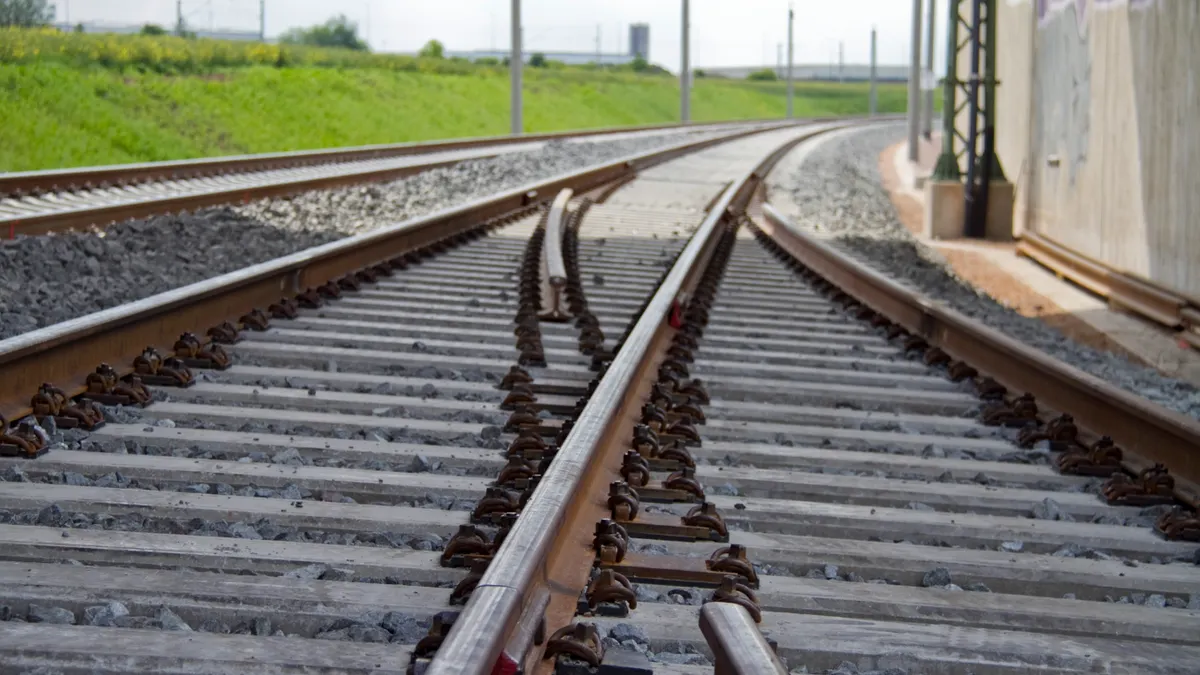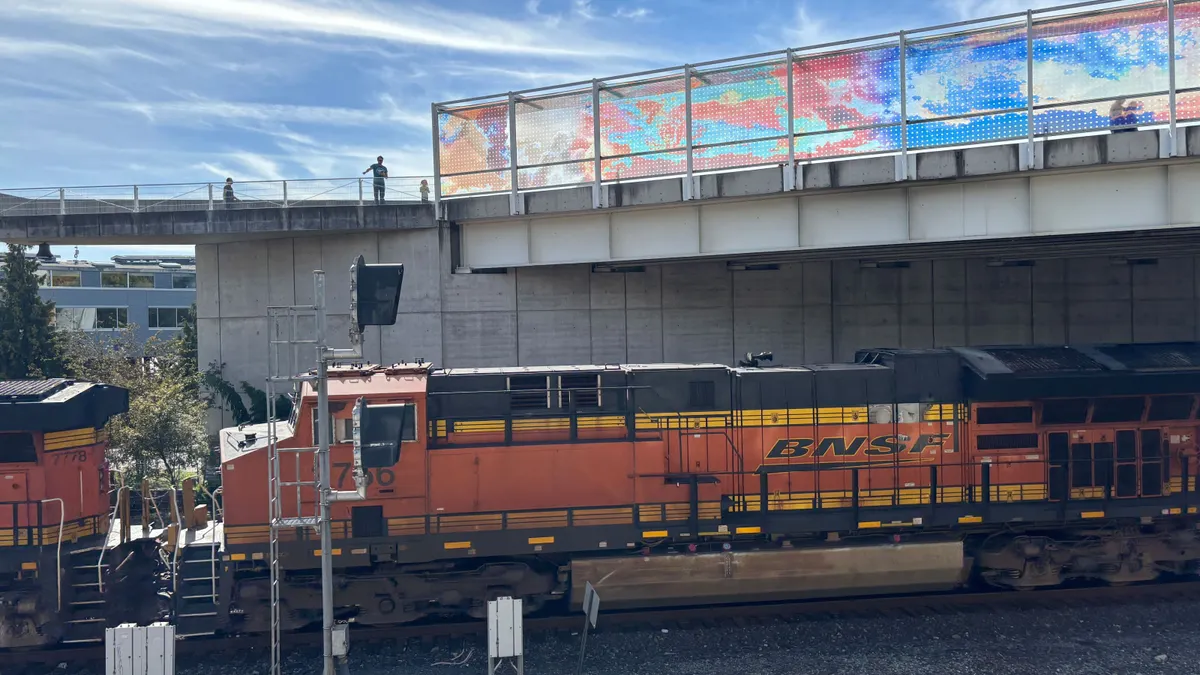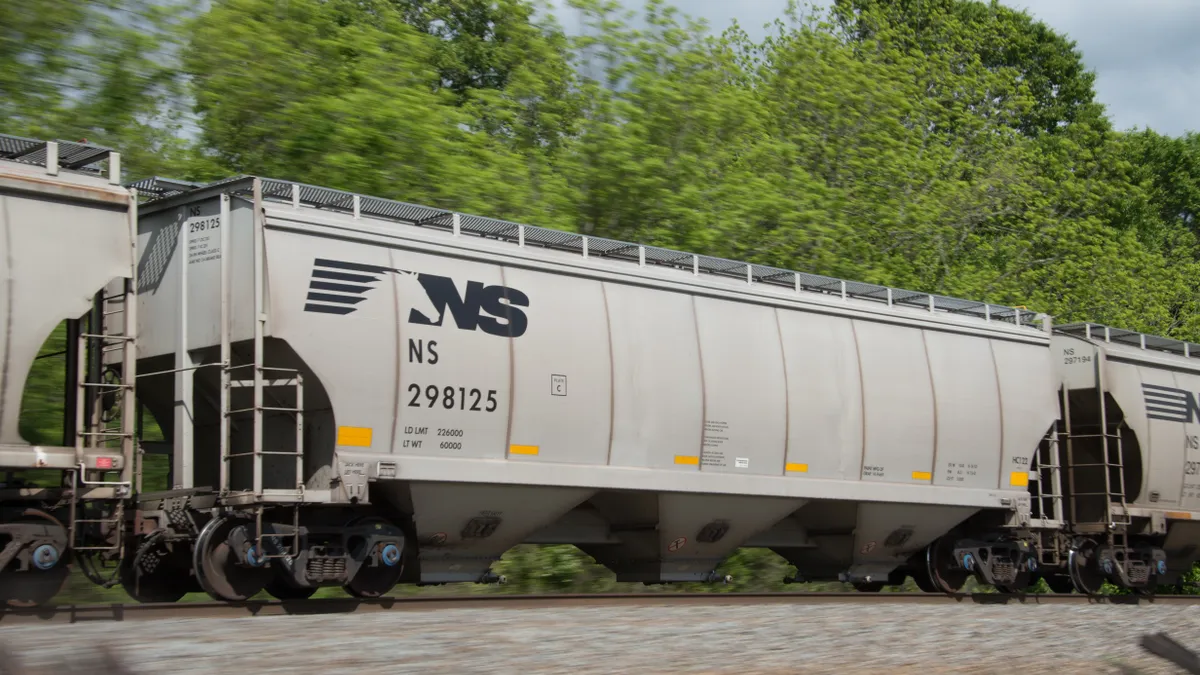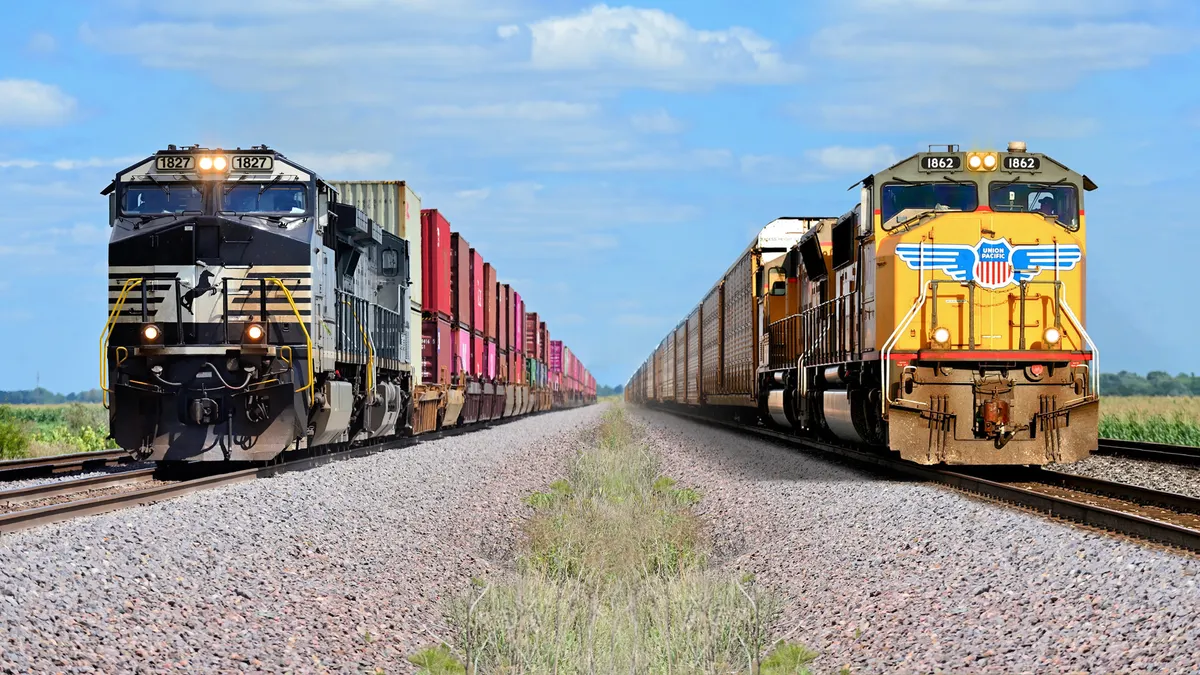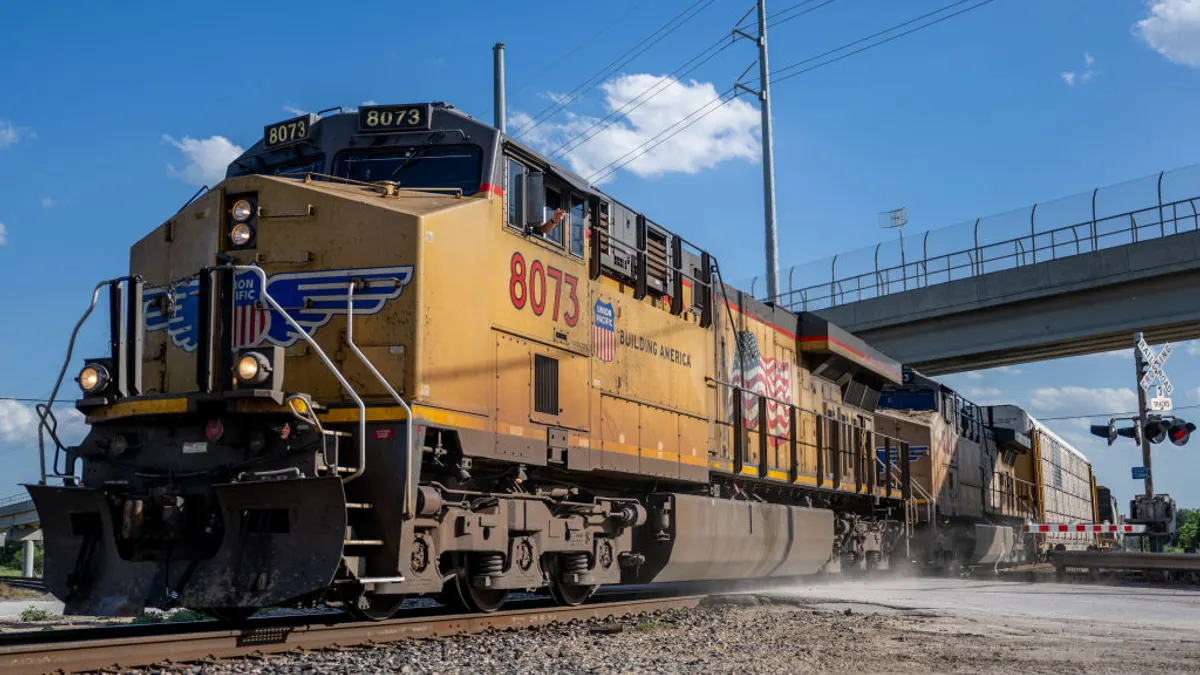The lesser-known pitfalls of the U.S. Class I railroads' conversion to precision-scheduled railroading are delayed responses, billing errors and unreliable maintenance checks, according to a panel of rail shippers speaking at the North East Association of Rail Shippers virtual conference last week.
"The actual transportation service is okay. It's improving," said Rick Lissa, senior director of logistics management at Formosa Plastics. "Where we're seeing a decline in service is in some of the ancillary services."
When a car does not keep to its intended course — when it's lost or misrouted — resolution takes longer than it did before PSR, Lissa said. Billing, too, is becoming more of a concern, with the three shippers on the panel acknowledging their bills are more likely to contain errors today than a few years ago.
"Shippers need to be aware that there is a need to be a little more vigilant," said Laura Henderson, director of supply chain and logistics for lime and minerals supplier Lhoist.
Maintenance checks shift to shippers
Ever since PSR spread south from the major Canadian railroads beginning with CSX 2017, staffing cuts have followed. Union Pacific, CSX, Norfolk Southern and Kansas City Southern (BNSF is the only U.S. Class I PSR holdout) have announced crew start reductions nearly every quarter. Some have opted for outright layoffs in management as they reorganize around new operation structures.
The question of how much each publicly traded railroad will reduce "headcount," as it's often called, comes up virtually every quarter on earnings calls with analysts.
The panel of shippers said the staffing reductions are especially noticeable in the maintenance functions where shippers feel forced to conduct equipment inspections they have traditionally left to the railroads.
"On maintenance, I can say that we have seen the need to push our plant and terminal personnel to be more observant in reporting things that they had previously relied on the railroads to catch," Henderson said. Lhoist chose to build its own inspection team, rather than risk cars going out of service.
"I know there are many many railroads with great plans for the future, in terms of deploying [artificial intelligence] and machine learning with some of these high-speed photo detections. Those plans are great. I love seeing the railroads move in that direction, and I want to see more of it. I don't think that deployment timed well with the personnel cuts," said Eric Monger, managing director of Koch Rail.
Pandemic demand drop exacerbates the trends
The pandemic has exacerbated the PSR-related personnel cuts. Since the pandemic sent rail freight volumes into the basement, the Class I railroads furloughed thousands of workers and stored equipment. Now, instead of cutting existing staff and equipment, they are in the position to choose whether and where to build capacity back.
Some railroad CEOs have said publicly that they will try to maintain the equipment and personnel cuts they made in response even when volume returns.
Nonetheless, some railroad leadership continue to say their service is increasingly truck-competitive. "We know [spot] rates are going up and we're able to offer an alternative to them with truck-like service," Mark Wallace, executive vice president of sales and marketing for CSX, said at an investor conference earlier this month.
But Monger said that railroads' inability to ramp-up to meet demand as it returns is having the opposite effect.
Some railroads are even declining Monger's business, he said, out of hesitance to dial-up capacity again and pull railcars out of storage. "That's all well and good — that just put three to five trucks on the road," he said.
In the midst of shifting demand and evolving railroad priorities, Lissa said, listening to the railroads outside of direct communication with them — in public speeches, financial disclosures and earnings call — is an important practice for shippers to adopt.
"Make sure you listen to what the Class Is are saying because they're going to tell you ... what their long-term strategy is going to be down the road," he said. "And that's where you're going to find where the easiest support is. If a railroad says it's shifting focus toward a commodity or freight class that isn't the one you're shipping, believe them and work in the areas you can find mutual benefit."
Correction: In a previous version of this article, the North East Association of Rail Shippers was misspelled.



